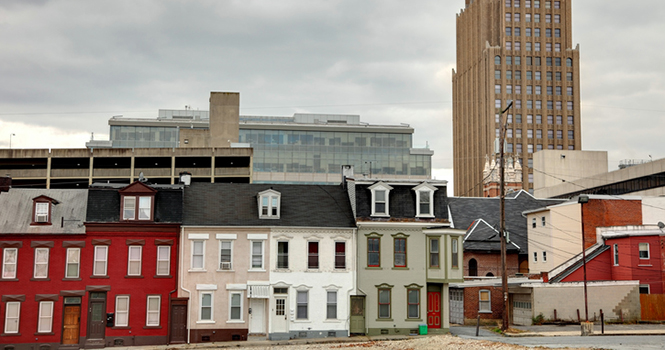Small cities once booming as industrial hubs have the opportunity to prosper again, according to recently released research from the Lincoln Institute of Land Policy.
A report by the organization, “Revitalizing America’s Smaller Legacy Cities: Strategies for Post-Industrial Success From Gary to Lowell” (Gary, Ind., and Lowell, Mass., two former manufacturing cities) presents three key steps for revival: leveraging the city’s distinct characteristics to improve quality of life; strengthening its downtown area; and supporting its labor market through pro-workforce policies and programs. The report was published in conjunction with the Greater Ohio Policy Center.
“The challenges faced by smaller legacy cities loom large in the American imagination,” write authors Torey Hollingsworth and Alison Goebel, of the Greater Ohio Policy Center. “It’s no coincidence that Billy Joel and Bruce Springsteen chose Allentown, Pa., and Youngstown, Ohio, respectively, as symbols of the demise of a certain kind of American Dream.”
Establishing roots in smaller cities is fading from the American Dream in part due to a lack of funding and infrastructure that underpins thriving cities. Several smaller cities are hampered by housing and income disparities, as well as plagued by blight, and walk the line between embracing newcomers and longstanding residents.
The report compares 24 such “legacy” cities in the Northeast and Midwest, gauging indicators, including employment and population, observed from 2000 to 2015. The research revealed successful strategies to date, including:
Attract Talent – Hamilton, Ohio and South Bend, Ind., have attracted talent through fellowship programs designed to bring younger workers into the fold. Hamilton, also, has hired a city manager to redefine the culture at City Hall.
Encourage a ‘Sense of Place’ – Bethlehem, Pa., has encouraged its own “sense of place”—and promoted its historical uniqueness in the process—by establishing an arts and culture campus in a shuttered steel plant.
Look to Downtown – Syracuse, N.Y., and York, Pa., have each looked to downtown as the heart of resurgence, with Syracuse rebuilding its downtown and York reimagining its downtown as a business and retail district.
“No two places are alike, but smaller legacy cities can learn from each other as they reposition themselves, whether as a regional service center, a competitor on the national or global stage or a tourism hub,” authors Hollingsworth and Goebel write. “They will need to build teams from the public and private sectors who share a spirit of collaboration and the will to lead their communities through a period of great transformation.”
Source: Lincoln Institute of Land Policy
Suzanne De Vita is RISMedia’s online news editor. Email her your real estate news ideas at sdevita@rismedia.com.
For the latest real estate news and trends, bookmark RISMedia.com.











